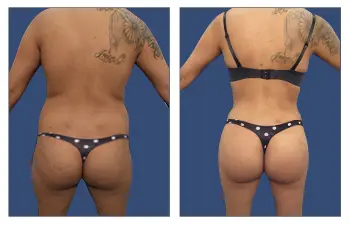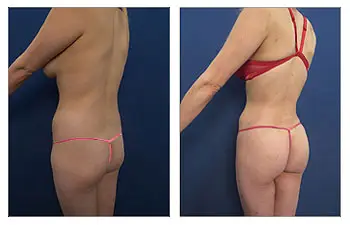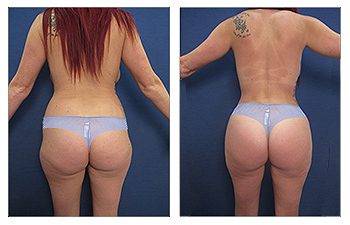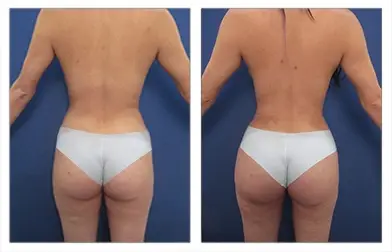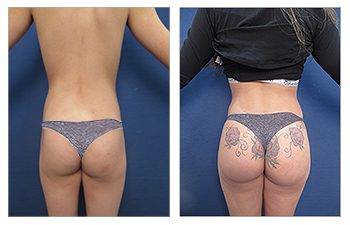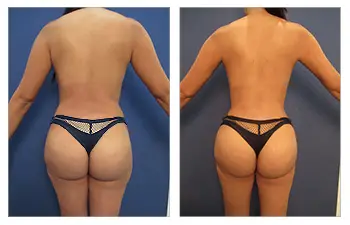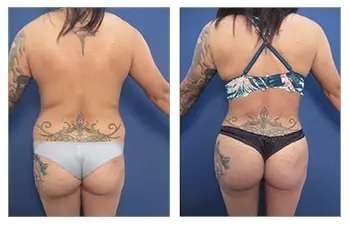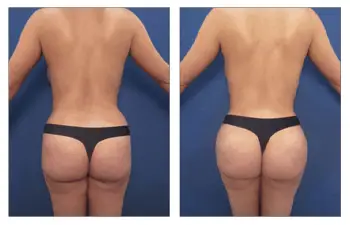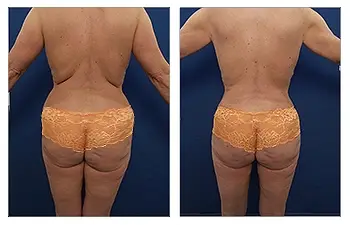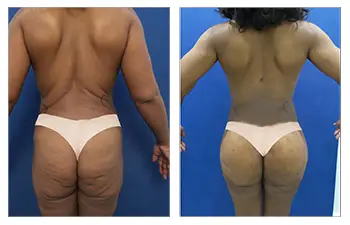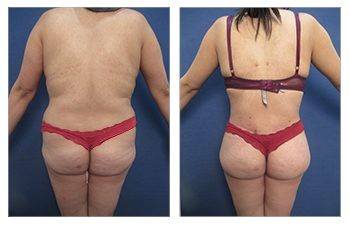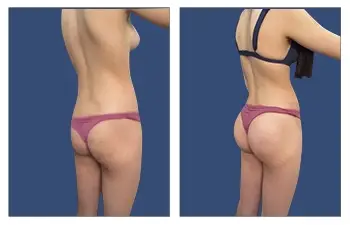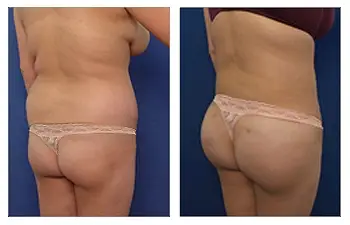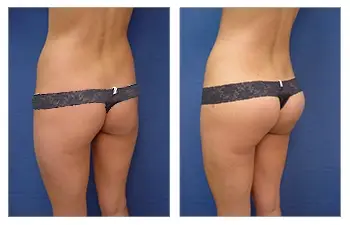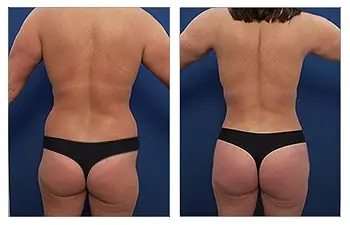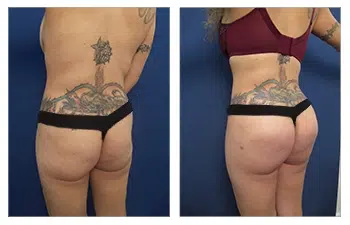Introduction on How to get rid of Cellulite on Butt
How to get rid of cellulite on butt has been an enigma for physicians until recently. The main difficulty was that the pathophysiology was not well understood. As a result the proposed treatment modalities have not been effective. Universally, the proposed treatments have only partially dealt with the difficulty of cellulite while neglecting all causation and in some instances created more problems. This blog is dedicated to how to get rid of cellulite in butt definitively. We will introduce our cellulite treatment centers as well as review the pathophysiology and proposed treatments historically prior to providing you our unique approach to cellulite treatment.
Cellulite Treatment Centers
To date, descriptions of cellulite pathophysiology have not been convincing as witnessed by universally poor treatment strategies. Various treatment options have been advocated and ranged from topical medications and non-invasive procedures to both minimally and more invasive surgeries. The inability to improve the appearance of cellulite has been a challenge and remains a Holy Grail in the cosmetic arena. To date, numerous treatment modalities have been periodically introduced and ultimately failed.
This website is dedicated to enlightening viewers on the most recent discoveries of cellulite pathophysiology that have finally clarified the paradoxical descriptions of cellulite morphology and clinical failures. The hypothesized clarification of cellulite morphology helps break current myths and provide perspective on failed treatment attempts to date. If you have been plagued by cellulite and dreamt of ridding yourself of these unappealing contour irregularities, please read on. We will not only elucidate the real pathophysiology surrounding cellulite, but also finally release to you a novel and minimally invasive treatment option that delivers effective results.
Introduction to Cellulite
Cellulite is a common skin condition that affects women more than men and is characterized by the appearance of scattered dimples laid over lumpy skin especially over the thighs, buttocks, and abdomen. It has been characterized by herniation of fat deposits which push through the skin surrounding a central tethering connective tissue band. Sporadic dimples result in the appearance of uneven texture which is commonly described as an “orange peel” or “cottage cheese” skin appearance.
Myths and misconceptions surrounding cellulite are essential to understanding the condition better and appreciate why current advocated treatments have failed. We’ll clarify why cellulite has been paradoxically observed in both patients who have gained weight as well as those who have lost weight or undergone a liposuction procedure. We will appreciate why cellulite is more common in patients who are physically inactive and why there is a propensity for developing cellulite as you age. We will debunk myths such as, “cellulite is solely a result of weight gain,” or “cellulite is due to your hormones”.
The Science of Cellulite
Understanding cellulite requires knowledge of skin structure. The structure of skin and fat requires a thorough explanation of the skin’s anatomy with regards to cell composition and connective tissue distribution beneath the skin’s external surface. Connective tissues is located just beneath the deep surface of the skin, called the dermis, and spanning between the muscle and the skin soft tissues, called the fibro septal network. Finally, you must consider the distribution of fat cells that are located in two separate planes, namely the superficial and deep layers.
Insight into this anatomy will shed light on the role of connective tissues and how they interact with fat cells to create the appearance of cellulite. Finally, you will discover how both lifestyle habits, such as diet and exercise as well as routine aging and genetic predispositions may influence the development of cellulite.
What is Cellulite?
Cellulite describes the mottled appearance of skin that is best described by sporadic dimples that riddle preferentially over lumpy appearing skin typically isolated to the thighs and buttocks, and less frequently the abdomen. Unfortunately, the classic explanation and caricature of skin dimpling and herniated fat characteristic of the appearance of cellulite has been misconstrued. Traditionally, a tight vertical band is typically depicted as creating the central tugging force responsible for the dimple, which is then surrounded by fat herniating around the periphery circumferentially.
With this simple depiction, it would seem that cellulite is due to skin that has become matted down by tethering cables interposed by areas of fat enlargement simply due to weight gain. This explanation is contrary to clinical observations since cellulite is often associated with loose and redundant skin that is actually not contracted down. The fact that cellulite is actually associated with loose skin rather than matted skin is depicted by the fact that the dimples in the thighs and lower buttock can be eliminated by simply grasping and pulling up on the upper buttock skin.
This simple maneuver eliminates the saggy and loose skin of the lower buttocks cheek and dramatically improves the appearance of cellulite. These observations contradict that cellulite is primarily caused by shortened, tethering ligaments retracting the skin down to the underlying muscle fascia. This assumption is further contraindication by the observation that elder patients who possess thinner fibrous matrices are actually more prone to cellulite when compared to younger patients.
This is because older patients produce less collagen and thus possess a thinner deep skin layer, called the dermis, as well as more attenuated fibrous bands spanning the soft tissues, called the fibro septal network (FSN). The final confusion regarding the development of cellulite is its association with enlarging and herniating of the fat that would limit cellulite presentation to only patients with weight gain. However, in reality, cellulite has been observed not only in clients with weight gain but also in clients with weight loss or even following liposuction!
Who gets cellulite?
The clinical observation regarding which patients are prone to developing cellulite has been an enigma until now. The truth of the matter is that cellulite is not solely observed following weight gain or weight loss. Actually, cellulite is observed in patients who have experienced both weight gain and loss. That’s correct, weight fluctuation is the critical prerequisite for developing cellulite. Additionally, both aging and poor lifestyle choices do make you prone to cellulite and this observation stems from reduced collagen production and thinning of collagenous composition of the deep dermal skin layer as well as the structurally supportive fibro septal network (FSN).
To fully appreciate the real pathophysiology of cellulite, we must delve into the clinical observations of cellulite. Dimpling of the skin typically presents as a few sporadic dimples that are interspersed throughout loose, sagging, and mobile skin. This skin is by no means contracted and tight as alluded to by the tight band theory. In fact, areas of the body most vulnerable to cellulite are located along the lower buttock and posterior thigh region fraught with sagging and loose skin. In addition, patients suffering with cellulite can’t be limited to fat herniation associated with simple weight gain. This is best appreciated by the fact that most younger females in their teenage years and 20s do not display cellulite even if they have put on significant weight. Moreover, cellulite has been observed in seemingly paradoxical overweight as well as weight loss patients regardless of if they have had liposuction.
The real clinical presentation for cellulite is a patients who has undeniably experienced fluctuation in their weight. That’s right, both a cycle of weight gain and subsequent loss are necessary to initiate cellulite. Repeated weight gain following an initial weight gain and loss will potentiate the development of cellulite.
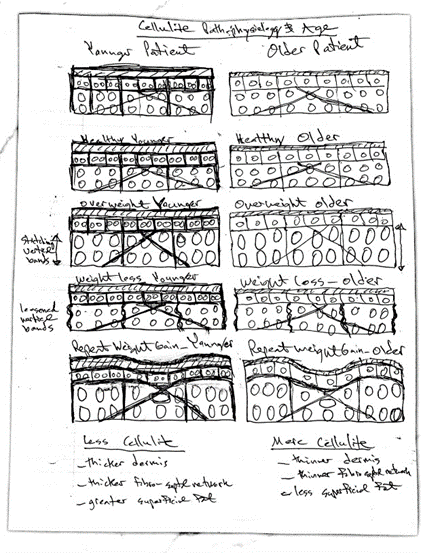
The Real Pathophysiology of Cellulite
The real pathophysiology of cellulite can only be appreciated by considering both layers of fat their composition, as well as connective tissue components of the skin and soft tissues. First, there are two layers of fat, the superficial and deep layers. The superficial layer possesses fat cells that are smaller in size and more compact as they are surrounded more by a high density of fibro septal network (FSN). The deep layer of fat possesses larger fat cells that are surrounded by less dense FSN.
Interestingly, the superficial fat cells are more constant and less prone size change with weight fluctuation. In contrast, the deep fat cells are more dynamic and will preferentially grow and shrink in size with weight fluctuation. These observations are likely because the deeper fat cells preside in a roomier layer that possesses less dense and constricting FSN fibers. This differentiation is critical to the hypothesized pathophysiology of cellulite.
The next pertinent discussion regarding cellulite morphology pertains to the collagenous deposition and distribution in the skin and soft tissues. To rationalize the seemingly contrasting clinical observation of sporadic dimples caused by presumed tight fibrous bands, yet globally loose and sagging skin we must take a closer look at the makeup of the fibro septal network matrix. It is hypothesized that the majority of FSN are oriented vertically with only sporadic diagonally oriented FSN fibers interspersed throughout.
With an initial weight gain, the deep fat cells tend to grow up, since they are constrained by their neighboring deep fat cells. As a result, when patients gain weight, the skin gets stretched up as it expands in the vertical direction more than the horizontal direction. This results in stretching out of the vertical FSN preferentially over the diagonal or oblique oriented FSN fibers. The increased tension induced on the vertical fibers results in loss of vertical FSN fiber integrity and elasticity while the oblique fibers preserve their integrity and elasticity. Protective elements of the oblique bands follows the fact that the increased tension of growing fat cells is more gently distributed throughout the length of the fibers that are oriented horizontally more than strictly vertically.
If weight gain is followed by weight loss , then the vertical fibers become loose since they have lost their recoil ability, whereas the oblique vertical fibers retained their recoil potential and thus tighten back down. Similarly, when patients undergo liposuction to remove the deep fat after weight gain, the compromised vertical fibers become loose when compared to the oblique fibers. Following either weight loss or after liposuction, patients will observe the initial hints of cellulite. Fat cells located in compromised vertical band areas will push the skin out, termed fat herniation, whereas areas where the skin is attached to oblique FSN fibers will resist fat bulging and dimple in.
This effect becomes even more exaggerated with repeated weight gain because the frayed vertical fibers cannot resist the tension placed on them by growing deep fat cells. The net effect is that the majority of areas that maintain vertical FSN fibers will bulge out as previously characterized by herniated fat, whereas more sporadic areas adhered down by oblique fibers will create sporadic dimpling.
Cellulite appearance can be further exaggerated by poor lifestyle habits and natural aging. The FSN and dermal composition of collagen thin out when we exposed to prolonged radiation waves of the sun, if we consume diets low in protein composition, or are not physically active. Collagen production is similarly reduced with natural aging as fibroblasts gradually diminish their output capacity resulting in global thinning of the skin and superficial FSN matrix.
Thinning of the skin and superficial FSN matrix make older patients more prone to vertical band compromise and fat herniation while decreasing resistance to the dimpling of oblique fibers. Regardless of age, cellulite formation is still predicated by fluctuation of weight with an initial weight gain followed by weight loss or liposuction surgery. Cellulite is even more exaggerated following repeated weight gain.
Failed treatment options for Cellulite
How to get rid of cellulite on butt must acknowledge prior failed treatments. The appearance of cellulite is primarily attributed to the structure of fat cells and connective tissues in the skin and subcutaneous layer. Fat cells, or adipocytes, are arranged vertically, and when these fat cells enlarge, they push upwards against the more rigid yet pliable skin and connective tissues. The appearance of sporadic dimples along saggy and loose skin is pathognomonic for cellulite. One of the most pervasive myths about cellulite is that it only affects overweight or individuals with hormone imballances.
In reality, cellulite can be present in people of all body types and health status, including those who are fit and lead an active lifestyle. However, as described above, the development of cellulite is predicated on weight fluctuation following an initial weight gain episode. Weight fluctuation leads to compromise of the majority of the FSN fibers since they are vertically oriented resulting in loose and saggy skin that is riddled with occasional oblique oriented FSN fibers attached to the center of the dimples.
To date, failed proposed treatments have been plentiful and ranged from topical treatments and non-invasive procedures to both minimally and more invasive surgeries that include:
- Topical Cream Products
Cellulite reduction creams are topical products formulated in an attempt to help the appearance of cellulite by targeting the underlying fat and connective tissue of the skin. While these creams have been touted to reduce cellulite, they have not been effective in improving the skin’s texture and reduce the dimpled appearance. Their exact mechanisms of action vary based on the ingredients used in the specific cream; some common topical products have included:
a. Moisturizing creams:
Many cellulite creams contain moisturizing ingredients like hyaluronic acid, glycerin, or shea butter, which help hydrate the skin. Improved skin hydration can lead to smoother skin texture but provide only temporary reduction in the appearance of cellulite and no therapeutic value.
b. Caffeine and Theophylline creams:
Some cellulite creams include caffeine or theophylline as active ingredients. These compounds have been proposed to work by promoting lipolysis, which is the breakdown of fat cells. When applied topically, caffeine and theophylline have not reduced the volume of fat cells in the treated area significantly, thus resulting in negligible reduction in the appearance of cellulite. Moreover, these creams would theoretically affect only the superficial fat cells and not be amenable to affecting the deeper fat cells.
c. Retinol creams:
Cellulite creams with retinol, a derivative of vitamin A, are believed to work by increasing collagen production and skin cell turnover. This can improve skin elasticity and firmness, by thickening the dermal collagen layer, making the skin appear smoother. Unfortunately, retinol cream will not migrate deep enough to the FSN cables that have loosened through weight fluctuations.
d. Peptide creams
Some cellulite creams contain peptides, which are short chains of amino acids that can potentially stimulate collagen production and promote skin repair. By boosting collagen levels, these creams may help improve the skin’s texture and reduce the appearance of cellulite. Unfortunately, in reality, negligible amounts of the peptide migrate deep enough to affect the integrity of compromised vertical fibers that are located in the deeper fat component.
e. Herbal Extracts and Antioxidant Creams:
Certain cellulite creams contain herbal extracts and antioxidants like green tea extract, gotu kola, or horse chestnut extract. These ingredients may help improve blood circulation and reduce inflammation, contributing to only temporary reduction in cellulite visibility but once again would not be therapeutic.
2. Massage and Application Technique:
The process of massaging the cellulite cream into the skin can also contribute to improved circulation and lymphatic drainage in the treated area. This may help reduce fluid retention and improve the skin’s appearance, but would only improve appearance temporarily.
3. Velashape
VelaShape is a non-invasive medical procedure designed to improve the appearance of cellulite and contour the body. It combines multiple technologies, including radiofrequency (RF) energy, infrared light, vacuum, and mechanical massage, to target and reduce the appearance of cellulite. Here’s how VelaShape works to improve cellulite:
Application of RF and Infrared Energy: During the VelaShape procedure, the healthcare provider uses a handheld device that delivers RF energy and infrared light to the targeted areas of cellulite externally. The RF energy heats the underlying tissues, stimulating collagen production and promoting tissue tightening.
Vacuum and Mechanical Massage: The VelaShape device also incorporates a vacuum and mechanical massage mechanism. The vacuum gently pulls the skin towards the device, allowing the RF energy and infrared light to penetrate deeper into the tissues. The mechanical massage aids in the circulation and drainage of the treated area.
Fat Cell Shrinkage: The combined effect of RF energy and infrared light heats the fat cells, causing them to shrink. This can lead to a reduction in the volume of fat in the treated area, contributing to a decrease in the appearance of cellulite.
Collagen Stimulation: The heat generated during the VelaShape treatment also stimulates the production of collagen in the skin. Collagen is a protein responsible for skin elasticity and firmness. Increased collagen production can lead to skin tightening and smoothing of the treated area.
Improved Circulation and Lymphatic Drainage: The vacuum and mechanical massage in the VelaShape treatment can improve blood circulation and lymphatic drainage, which may help reduce fluid retention and further improve the appearance of cellulite.
Unfortunately, Vellashape has failed to provide dramatic improvements in cellulite appearance. Even if we assume that its proposed mechanisms of action are effective and able to penetrate into the deeper layers of fat and vertically oriented FSN fibers, it does not provide the capacity to release the tightened oblique oriented FSN fibers.
4. Qwo
Qwo is a subcutaneous medication that is injected into the soft tissues. Qwo contains an enzyme called collagenase clostridium histolyticum, which specifically targets and breaks down the collagen bands that have been proposed to be responsible for causing cellulite. Once injected into the cellulite-affected area, the enzyme hypothetically breaks down the central fibrous septa, releasing the tension on the skin. As a result, the skin became smoother, and the dimpled appearance of cellulite would become reduced. In addition to breaking down the existing collagen bands, Qwo was also touted to stimulate the production of new collagen in the treated area. The increase in collagen was hoped to help strengthen and thicken the skin, contributing to further improvement in the appearance of cellulite over time.
The difficulty with Qwo administration, was that it could not be accurately delivered and selectively disbursed to the connective tissues thus creating an enigma to which fibers were going to be released versus tightened. Ultimately, its efficacy was questioned resulting in the disuse of the product nationally.
5. Cellulaze
Cellulaze is a medical procedure used to treat cellulite using an internalized laser fiber. Following infiltration with a local anesthetic, the small cannula is containing the laser fiber is inserted under the skin. The laser has been advocated to target both the collagenous fibers as well as the fat cells. It has been conjectured to provide both simultaneous release the fibrous bands under the skin responsible for the appearance of cellulite as well as stimulate collagen production, leading to skin tightening and improved skin elasticity. Meanwhile, the laser energy apparently also targets and disrupts fat cells, reducing their size and volume.
In conclusion, Cellulaze was designed on the premise that laser energy delivery which emits controlled energy directly into the subcutaneous tissue (the layer of fat and connective tissue beneath the skin). The laser’s thermal energy has four primary effects:
- Release of fibrous bands: Cellulite is characterized by fibrous connective tissue bands that pull down on the skin while fat cells push up, creating the dimpled appearance. The laser energy selectively targets these fibrous bands and releases them. By cutting the fibrous bands, the skin’s surface becomes smoother.
- Fat cell disruption: The laser energy also targets and disrupts fat cells, causing them to shrink and reducing the volume of fat in the treated area. This can help to minimize the appearance of cellulite.
- Collagen stimulation: The laser’s thermal energy stimulates collagen production in the skin. Collagen is a protein that provides structural support to the skin and is essential for maintaining skin elasticity. Increased collagen production leads to skin tightening, which further improves the skin’s texture and reduces the appearance of cellulite.
Tissue tightening: As the fibrous bands are released and collagen production is stimulated, the skin in the treated area gradually tightens, contributing to a more youthful and smoother appearance.
The Cellulaze procedure typically takes about 1 to 2 hours, depending on the treatment area’s size and extent of cellulite. Although recovery time is relatively short, with most patients resuming normal activities within a few days after the procedure, the treatment’s efficacy has not been fruitful. To date, the majority of medical facilities have leaned away from recommending Cellulaze.
6. Celllfina
Cellfina is a minimally invasive medical procedure used to treat cellulite. Like Cellulaze, it targets the underlying causes of cellulite to improve the skin’s appearance in areas with dimpled or lumpy skin. Cellfina uses a technique called subcision to address the fibrous bands that pull down on the skin, creating the characteristic dimples associated with cellulite. Cellfina is performed by first injecting the skin with local anesthetic. Then a small incision is created in the skin through which a microblade or small needle-like device is introduced into the subcutaneous tissues.
By releasing fibrous bands using the microblade or needle, the provider precisely targets and releases the fibrous bands that create the dimpled appearance of cellulite. By breaking these bands, the tension on the skin is reduced, leading to smoother skin in the treated area. Unfortunately, the fact that the blade is always engaged makes it difficult to find and release bands selectively and effectively. In addition, Cellfina is unable to tighten the loosened vertical FSN fibers, thereby not addressing the loose and saggy skin. As a result the efficacy of Cellfina has not been observed.
Successful Treatment Option for How to get rid of cellulite on Butt
At Cellulite Treatment Centers we have delineated the real pathophysiology of cellulite formation that involves understanding the underlying skin and soft tissue anatomy. These proposed findings are based on a foundation of a static superficial soft tissue layer that possesses a compact fat layer that is not affected by weight fluctuation and a deep layer that is dynamic and affected by weight gain or loss. It is also the deep fat that is selectively removed during liposuction procedures.
Furthermore, the deep layer maintains a majority of vertical fibers that become frayed when exposed to the strain of weight gain and sporadic oblique fibers that maintain their elasticity even when exposed to moderate weight gain. Following weight gain and then either weight loss or even more dramatically after repeated weight gain, the classic appearance of cellulite can be appreciated. These undesirable changes include sporadic skin dimpling on a background of loosened and sagging skin that maintains herniated fat cells.
At Cellulite Treatment Centers we offer a bimodality treatment as the gold standard in cellulite reduction. These include the provisions of releasing the oblique fibers that attach to the center of the dimple and tightening of the vertical fibers throughout the field.
1. Aveli
Aveli describes a sleek want that can be introduced through a small needle stick that maintains a retractable hook blade and light. This apparatus may be used to selectively identify and release the oblique fibers that attach to the central dimple region. An analogous tool, namely an endoscopic scissor can be used that has a controlled scissor head to selectively cut the oblique fibers identified as tethering the dimples down. By controlling the activation of the blade or scissors, it is possible to guide release of tethering FSN fibers without further releasing the frayed vertical fibers.
2. Attiva
Attiva is a novel triphasic radiofrequency device that similarly utilizes sleek wands that are introduced into the subcutaneous tissues through a needle stick. The want may be guided by palpation both in the superficial plane as well as the deep planes of the soft tissues. The emitted proprietary energy allows for both immediate and delayed benefits to attenuated and loosened collagen fibers termed subdermal coagulation. The immediate effect of subdermal coagulation is the shrinkage of loosened vertical fibers when exposed to controlled, safe application of heat. The delayed secondary effect of subdermal coagulation is the stimulation of collagen production and remodeling of collagen fibers both along the deep dermal layer as well as the superficial soft tissue layers.
Conclusion: How to Get Rid of Cellulite on Butt
We have finally introduced the gold standard for how to get rid of cellulite on Butt. In summary, the combined Aveli and Attiva treatments are considered the GOLD STANDARD in cellulite treatment today for how to get rid of cellulite on butt. If you are concerned about the unsightly appearance of cellulite, we urge you to fill the form below or contact us today for a complimentary evaluation so that you can appreciate how to get rid of cellulite on butt.

